I am using the gmid method to design a common-source amplifier. The gmid method forgoes the use of the square-law equations for lookup-tables/charts to provide accurate results when designing circuits.
Consider the common-source amplifier shown below that is biased with an ideal current source. It turns out that to meet certain specification, the transistor needs to be biased in moderate inversion. I have found the current needed, the W and L for the transistor. However, the gmid method doesn't tell you what voltages to use. Let's say I want the output voltage to be centered at \$0.5 V_{DD}\$. How do I calculate the DC value of \$V_{in}\$. Since the transistor is operating in moderate inversion, I cannot use the square-law equations/rules. I was thinking of using an op-amp with a feedback, but this seems like a massive overkill. Any ideas how to set \$V_{in}\$?
